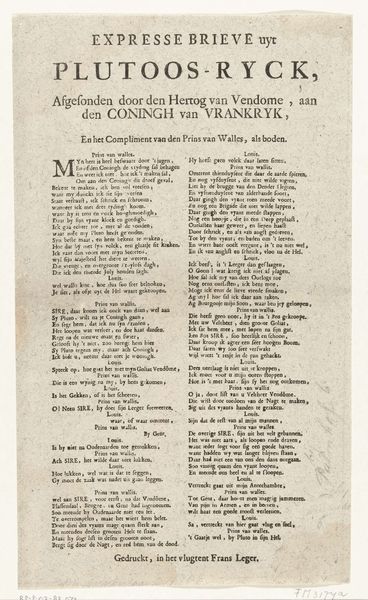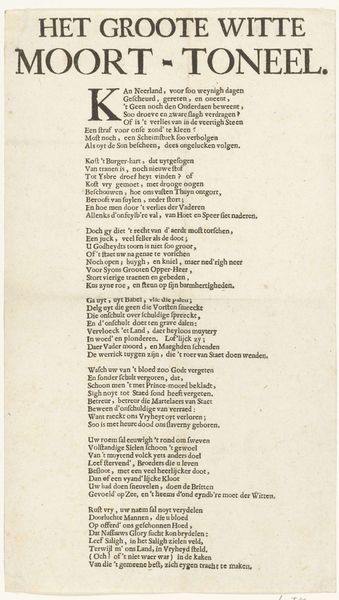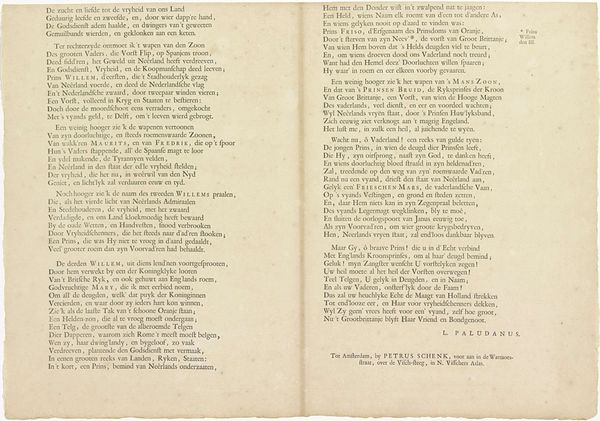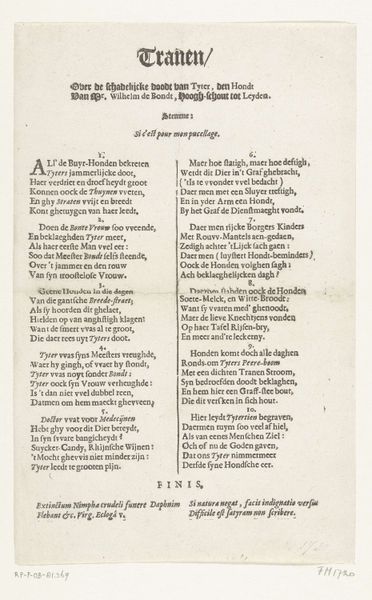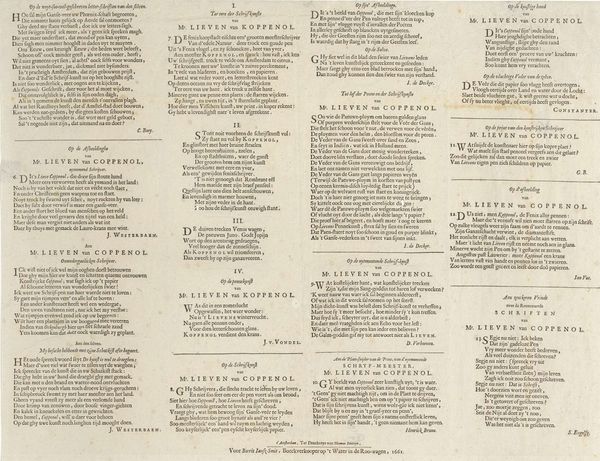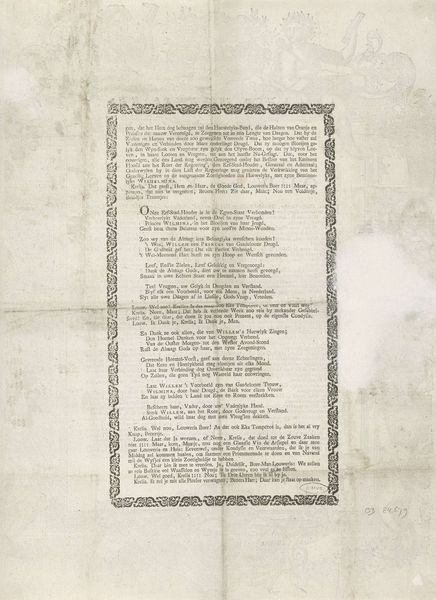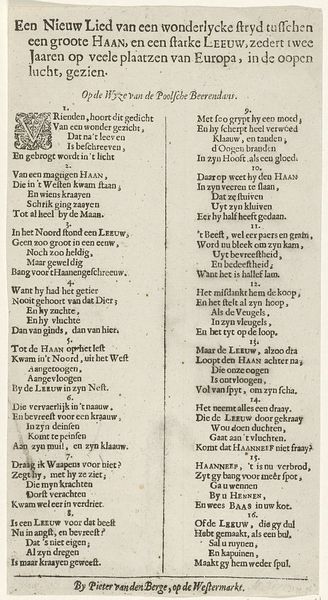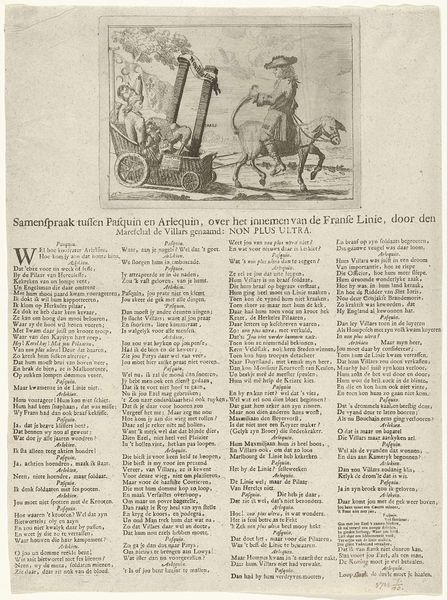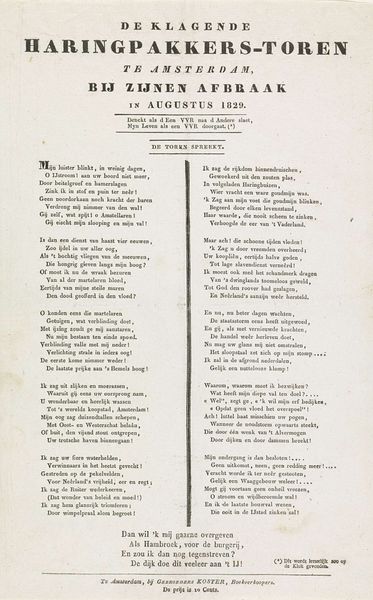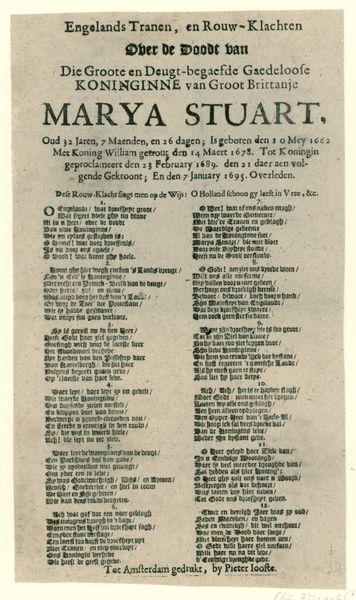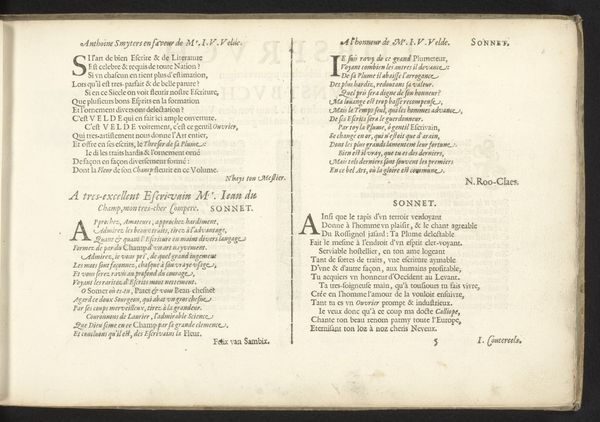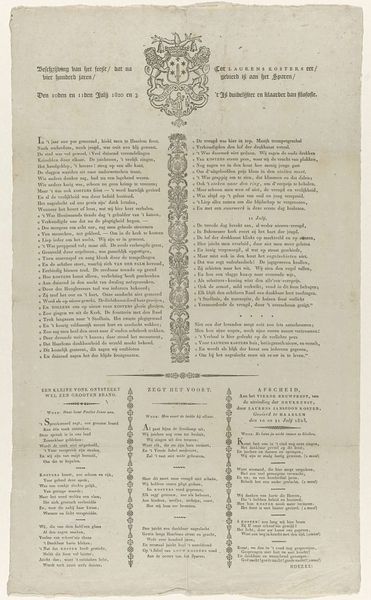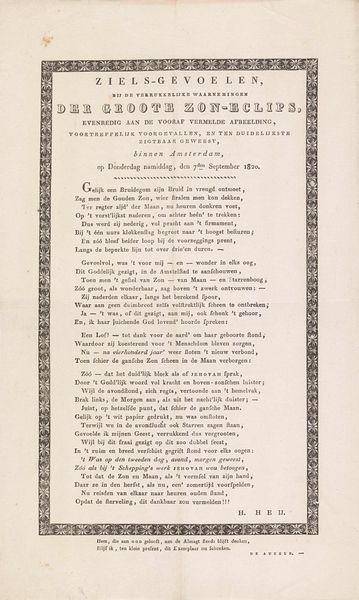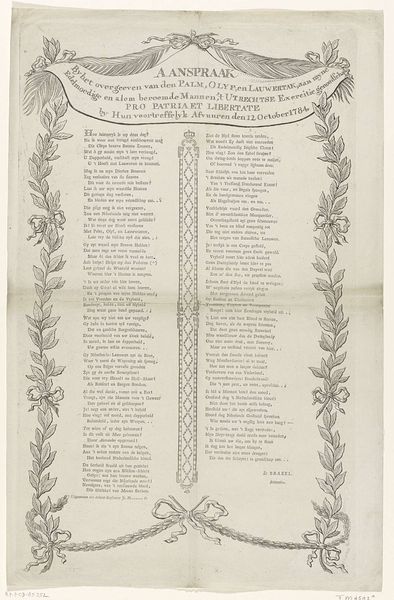
Gedichten van Joost van den Vondel op de schilderijen van de twaalf maanden, de dag en de nacht van Sandrart 1643 - 1645
0:00
0:00
graphic-art, print, typography
#
portrait
#
graphic-art
#
baroque
#
dutch-golden-age
# print
#
small type
#
typographical layout
#
text
#
paragraph style
#
typography
#
image and text
#
document
Dimensions: height 383 mm, width 267 mm
Copyright: Rijks Museum: Open Domain
Curator: Here in the Rijksmuseum, we have “Poems by Joost van den Vondel on the paintings of the twelve months, day and night, by Sandrart,” dating from 1643 to 1645. What’s your immediate reaction to this example of graphic art? Editor: My first impression is its density. Look at the tight typographical layout; it's just an expanse of text. Curator: Indeed, these aren’t just decorative flourishes, they represent an important synthesis between the visual and literary arts in the Dutch Golden Age. Sandrart, though a painter, clearly saw text as integral to the complete artwork, commissioning poems from Vondel to accompany his series of paintings of months, day, and night. Editor: I see it more as an early experiment in integrating image and text—a precursor to the illuminated manuscripts, maybe? The emphasis seems to be on communicating directly rather than aesthetic ornamentation. It almost resembles a broadside in its intent. Curator: Certainly, it aimed to be accessible. The text is arranged in columns, each section dedicated to a month or time of day, exploring the symbolic associations with that period. Consider “Wintermaent,” described with imagery of mourning, the extinguishing candle. Editor: Yes, the descriptions offer a glimpse into 17th-century life. “Slachtmaent” depicts a weary hunter with his captured hare—the seasonality driving work and thought. However, beyond such descriptive cues, what does it visually achieve? Curator: Its importance lies in the context of the time, capturing cultural values, beliefs about nature, labor, and leisure—the socio-cultural impact and meaning through the interplay of Vondel's poems and Sandrart’s paintings, celebrating earthly labor through allegory. Editor: Perhaps. From a formalist perspective, the dense, uniform typography risks obscuring any symbolic effect and makes it hard to view as a singular visual artwork. Its appeal hinges entirely on decoding the embedded seasonal and diurnal allegory and its relation to now-lost images. Curator: I appreciate how this print provides us insight into Dutch Golden Age society through the eyes of Vondel. It reminds us that artworks are often deeply embedded in their cultural and historical moments. Editor: And I agree this textual encapsulation offers access into how different arts interacted.
Comments
No comments
Be the first to comment and join the conversation on the ultimate creative platform.
